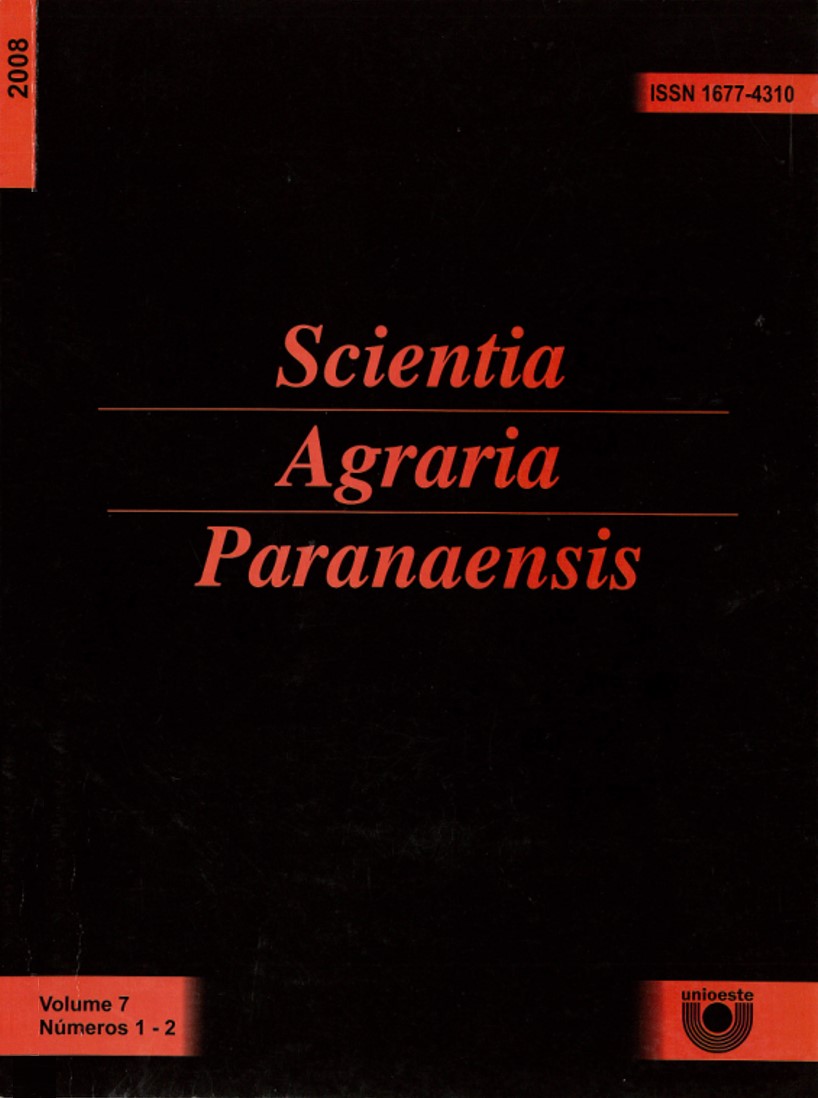Avaliação econômica do milho e feijão em sistema de semeadura direta e convencional em campos dos goytacazes – RJ
DOI:
https://doi.org/10.18188/sap.v0i0.2054Palavras-chave:
Phaseolus vulgaris, benefício/custoResumo
Objetivou-se, neste trabalho, comparar os resultados econômicos da produção do milho e do feijão em sistema de plantio direto em comparação ao convencional em Campos dos Goytacazes – RJ. Os resultados econômicos da cultura do milho evidenciaram a inviabilidade econômica da milhocultura tanto no sistema de semeadura direta como no convencional, na atual conjuntura de mercado deste produto no Brasil. No entanto, o sistema de semeadura direta proporcionou os melhores resultados. Por outro lado, a cultura do feijão se mostrou viável economicamente, conferindo lucratividade, uma vez que apresentou taxa interna de retorno mensal e relação benefício/custo de 2,21% e 0,61%, respectivamente, e 1,57 e 1,05, tanto em semeadura direta como na convencional, respectivamente. O feijão em sistema de semeadura direta com o emprego da adubação verde apresentou a receita líquida, a taxa interna de retorno mensal e a relação benefício/custo, respectivamente, 1.073, 262 e 50% superior ao cultivo utilizando-se o preparo convencional do solo. Pode-se inferir que o cultivo do feijão, em semeadura direta, reduz custos totais e aumenta a lucratividade quando comparado com o preparo convencional do solo.
Downloads
Publicado
Como Citar
Edição
Seção
Licença
Aviso de Direito Autoral Creative Commons
Política para Periódicos de Acesso Livre
Autores que publicam nesta revista concordam com os seguintes termos:
1. Autores mantém os direitos autorais e concedem à revista o direito de primeira publicação, com o trabalho simultaneamente licenciado sob a Licença Creative Commons Attribution que permite o compartilhamento do trabalho com reconhecimento da autoria e publicação inicial nesta revista.2. Autores têm autorização para assumir contratos adicionais separadamente, para distribuição não-exclusiva da versão do trabalho publicada nesta revista (ex.: publicar em repositório institucional ou como capítulo de livro), com reconhecimento de autoria e publicação inicial nesta revista.
3. Autores têm permissão e são estimulados a publicar e distribuir seu trabalho online (ex.: em repositórios institucionais ou na sua página pessoal) a qualquer ponto antes ou durante o processo editorial, já que isso pode gerar alterações produtivas, bem como aumentar o impacto e a citação do trabalho publicado (Veja O Efeito do Acesso Livre).
Licença Creative Commons
Esta obra está licenciada com uma Licença Creative Commons Atribuição-NãoComercial-CompartilhaIgual 4.0 Internacional, o que permite compartilhar, copiar, distribuir, exibir, reproduzir, a totalidade ou partes desde que não tenha objetivo comercial e sejam citados os autores e a fonte.


